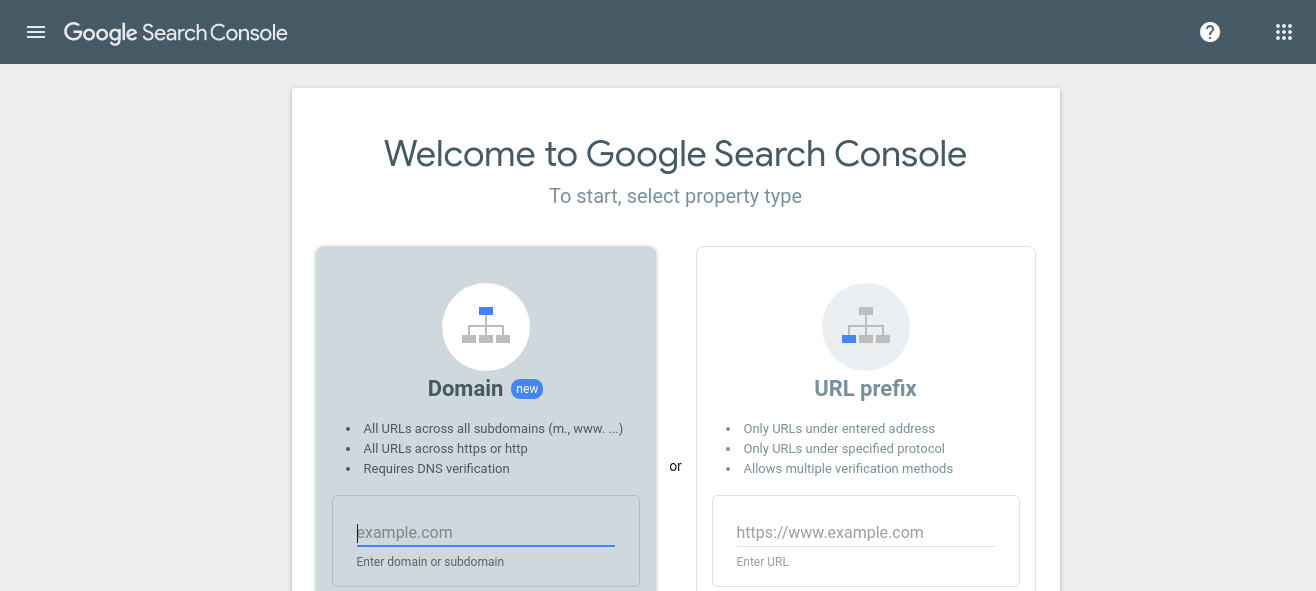
Google will not rank your blog if you only optimize its title. Google will index your content if it can find keywords in your content. A basic SEO strategy will help Google do this. Another area to focus on when optimizing a blog for SEO is headings. These help readers flow through your content and search engines understand the hierarchy of reading. Be sure to use keywords and phrases when creating headings.
Meta description
A meta description is an essential part of any SEO blog. Use an organic tone to write it. Use your meta description to answer the user's query and display your high quality content. Avoid spammy websites. Keep in mind the golden rule: Write for people, not robots. You will get more clicks. Here are some suggestions to help you craft a compelling meta-description.
Make it interesting. Use your main keyword as your meta description. Google doesn't consider your meta description when indexing your site, but it helps to attract users' attention. Your meta description should be between 140-160 characters. Bold the most important words. The description should also include a call to action, such as a link to your website. A well-written meta description should include an attractive call to act.
You can advertise your company by using the meta description. It is a great opportunity to get a user to click on your link and grab their attention. A high-quality meta description can increase your site's website traffic and increase sales. To encourage users, a call for action should be placed at the end. Your meta description could be deemed useless if it is too long or contains outdated data.
A meta description is not only readable but can also increase click-through rates. Properly using the meta description can increase both your organic traffic, and your ranking. Google's search engine result pages play a minimal role in your meta description. Your meta description may not be optimized well enough to rank your page on page four, instead of page 1. If your blog has a low click-through rate, it is still worthwhile to add a meta description.
Keywords in title
You can get the most from your SEO blog posts if you use targeted keywords in your title. Keywords in your title can help you to determine the direction of your content, and the likelihood it will reach your audience. Search engines summarise web pages based upon the keywords found in the content. These crawlers use advanced technology to determine the quality of web pages. In order to increase your articles' search ranking, you should include specific keywords in their titles.
If you own a gym, use phrases related to crossfit training or crossfit gyms. Be sure to only use one keyword in each article. Using too many keywords in the same article can look spammy to the search engines, which makes your content less valuable to your readers. Your articles may rank higher than shorter-tail keyword phrases if you use long-tail words. These phrases can help you rank higher for a keyword in Google.
The title of your SEO website should not exceed 70 characters. Title tags should contain the keyword focus as close as possible to the beginning. Additionally, the chosen keyword should communicate the benefit of your post. Keyword stuffing is a bad practice. Google warns against keyword-stuffed titles. You should use a strong focus keyword for your title, and ensure your audience can easily understand the content.
Just putting your keywords in the title is half the battle. Your title for your article should not exceed 60 characters (or 575 pixels). Make sure your title lives up to the promise you promised in the title, and make it easy for people to scan it and read. SEO is about planning. Make sure your title is as effective as possible.
Internal links

There are many ways to improve the search engine optimization (SEO) of your website or blog. To direct users to different pages within your website, one option is to use internal linking. These links can be used to direct users to different pages or products. This improves user experience and increases search performance. It is important to remember that internal links are not like backlinks, and readers are unlikely to find them on their own. But using internal links in the right places is one way to achieve this.
SEO-friendly SEO strategies include linking to relevant internal pages on your blog. This is a great way to keep readers coming back. Most sites add different styles to their links, so it is important to choose the right words and anchor text when implementing a link strategy. Internal links can be used to increase attention and make your visitor stay longer on your site. You want to get the best out of your internal links. Make sure they point back at relevant content and offer a helpful solution.
If possible, the internal links should point directly to the main target keywords. Google won't penalize you for using exact match anchor text. However, it is unlikely that Google would. However, it should not be keyword-stuffed. It is not a good idea to manipulate the anchor text to boost your search engine rankings. This is against Google's webmaster guidelines. This tactic is far more effective than you might imagine.
To optimize internal links, you can create content about topics that are related to your core business. For example, a landscaping company in Columbus generates 390 searches a month, far less than the search volume for the phrase "best smartphone." SEO can be enhanced by strategically including internal hyperlinks in blog posts. This is done by anticipating the questions users may have as they visit your site.
Schema markup
To improve search engine rankings, schema markup can be used in blog posts. To create schema markup, visit Google Structured Data Markup Helper. This tool allows you enter the URL of your website and select a category. The HTML code can then be copied. This tool generates a tag manipulator and a rendered page in a new window. From there, you can click individual elements to tag them.
There are three types: NewsArticle (TechArticle), Microdata (Microdata). Depending upon the content of the post each type can have a different set or flags. NewsArticle, on the other hand, is for articles that cover current events. TechArticle might have flags that indicate what technical content is in an article. A HowTo article might have flags that indicate author's technical level and the program used.
Google has made it easier to create schema. It allows you tag data and shows similar content in search results. It is recommended that you use schema markup in your blog posts to build brand awareness. You can use schema to advertise a small business located in a specific area. You can also promote your business or events using schema. There are many benefits to using schema markup for your SEO blog post. The links below will guide you through the process of selecting the right schema markup.
Schema can be used to optimize your content, in addition to improving search engine optimization. The markup helps search engines understand the different elements of a site. Schema markup can help you identify ingredients, instructions, and ketogenic diets when you blog about food. Schema can also be used for review blogs. You can also use schema to help your review blog rank higher in search engines.
Copyright for image

It is crucial to verify the permission of any images you plan on using for your SEO blog. Many PR agencies do not share images from their websites, and you may not be able to use them. Contact the owner directly to find out. Many times, the owner will grant permission to you to use the image. Here are some tips that will help you comply with the law.
Do not use Google images. Before using an image on your site, you should get permission from the owner. Google allows you search for images but you must get permission before you can use them. If you're having difficulty finding the image you want, you can request permission from the page hosting it. This will help you ensure that you don't violate a copyright. Images copyrights are crucial in determining whether a blog is successful or a site that is banned by search engines.
You should ensure that you check the copyrights for any image that you plan to use on your blog. It may be tempting to find images on Google Images. However, this is illegal. If you take images without permission, it can discredit the work of the creators and expose you to legal repercussions. If you have permission from their owner, fair-use images and public domain photos are allowed. Consult an intellectual property attorney if you have any questions.
Images used for SEO blogs must be of the same author and attribute. You are more likely than not to use humorous photos for SEO purposes. But you should always verify the licence terms. While some images can be used for free, others are subject to certain restrictions. You should not use images unless you are certain of their author. You may be violating the copyright if they are not royalty-free. A lawsuit could be filed against you, which can lead to significant financial losses.
FAQ
How can I create an SEO strategy for my website?
It is important to understand your goals and the best way to reach them. This allows you to structure your content around these goals.
The second step is to begin working with keywords. You can gain insight into the keywords people use to search for certain words by doing keyword research. You can then create articles on these topics by using this information.
Once you've written your articles, ensure to include your target keywords throughout them. You should also make sure to optimize each article with relevant images or videos. If possible, you should also link to other related sites.
Once you've finished writing all the content for your site, it's time to start optimizing that content!
How often do I need to update my website
There are many options for updating your website. A Content Management System (CMS) is one way to update your website. You can edit any content on your website without touching any code.
Another option is to install a plugin that automatically updates the website. These plugins may be purchased at WordPress stores or downloaded by you.
WPtouch plugins and Yoast plugins are available for free. You can test various methods and find which one works best for your needs.
Why use social media marketing?
Social media marketing offers a great opportunity to reach new customers as well as build relationships with existing customers. Engaging with others via comments and likes can help you build a community around your brand. It makes it easier to find potential customers online.
What is a "blog post"?
A blog is a type of website used to share articles with visitors. Blogs often contain both written posts and images.
Bloggers often write blogs about their personal experiences, opinions and interests. But some bloggers opt to write about topics relevant to their business or careers.
Blog owners can easily set up blogs by using a simple software program called a blogging platform'. There are many options for blogging platforms. Tumblr or Blogger are the most used.
Blogs are read by people who like the content. Therefore, it's vital to keep your writing engaging. Make sure you are familiar with your topic before you write.
You should also provide helpful information and resources to help readers understand the subject better. You should not tell someone to visit Google and see how other websites function. Instead, provide detailed instructions on how to build a website that is successful.
It is also important to note that blog content plays a major role in people enjoying reading it. If your writing isn't clear or concise, no one will want to read it further. Poor spelling and grammar are equally unacceptable.
It's easy to get carried away when you start blogging. Make sure you stick to a schedule and only publish content once every few days. You should not feel like your blog is a chore.
Why would I need a SEO strategy?
A good SEO strategy ensures you're not missing out on any opportunities to grow your business. No one will ever find your great content, even if you rank higher in search engine results.
An effective SEO strategy will help you establish relationships with industry experts and influencers. You can gain new techniques and strategies from them by tapping into their connections and learning from them.
Statistics
- A 62.60% organic traffic boost to that page: (backlinko.com)
- Deleting those 10k pages is one of the main reasons that he improved his site's organic traffic by nearly 90%: (backlinko.com)
- Which led to a 70.43% boost in search engine traffic compared to the old version of the post: (backlinko.com)
- These guides are designed and coded 100% from scratch using WordPress. (backlinko.com)
- If two people in 10 clicks go to your site as a result, that is a 20% CTR. (semrush.com)
External Links
How To
How to Create a Successful SEO campaign
Creative writing is not for everyone. You need to know how you can stand out.
Most writers are similar. They tend to follow the same patterns when they write. They repeat themselves, and they fall back on cliches.
Breaking out from old patterns and coming up with new ideas is the key. You have to think outside the box.
You must also find interesting ways to make you writing more engaging. It is important to consider the personality of your audience when you write for them. What turns them on? What makes them smile? What makes them feel sad?
What excites them most? What scares?
When you sit down and write, ask yourself these questions. Then, think about why someone might care about what your words are saying. Why would someone read your words and not others?
Once that is done, you are ready to begin writing your story.
Your hook is the first thing you should do. It is important to start with your hook. It's the first impression your readers make of you. Make wise choices.
Next, you need to decide if your piece will be informative or persuasive. Informational pieces explain facts. Persuasive pieces encourage readers to agree.
Next, decide whether you will tell stories or provide examples. Stories are thrilling. These examples show you how it works.